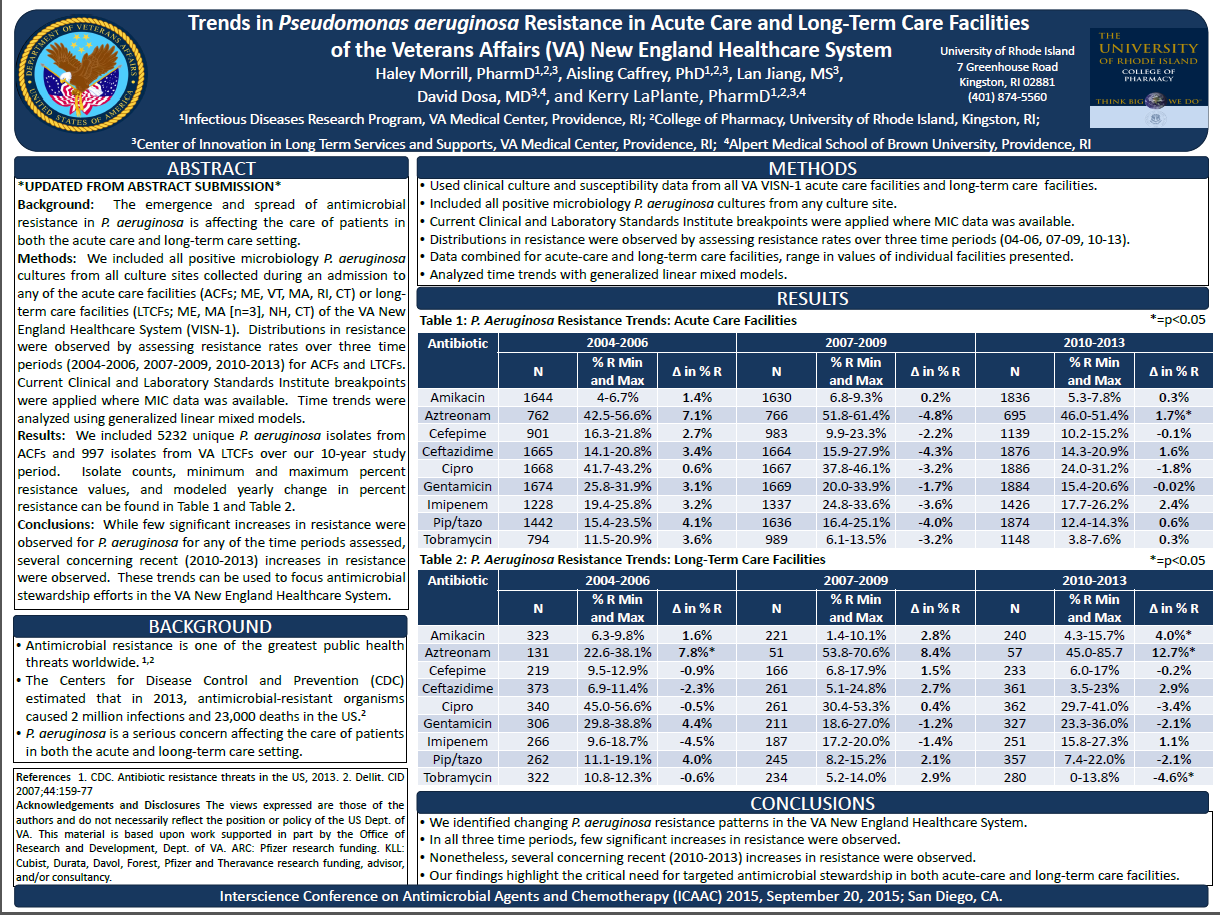- Presented at the Interscience Conference on Antimicrobial Agents and Chemotherapy (ICAAC) 2015, September 20, 2015; San Diego, CA.
- Haley Morrill, PharmD1,2,3, Aisling Caffrey, PhD1,2,3, Lan Jiang, MS3, David Dosa, MD3,4, and Kerry LaPlante, PharmD1,2,3,4
Research
Background: The emergence and spread of antimicrobial resistance in P. aeruginosa is affecting the care of patients in both the acute care and long-term care setting.
Methods: We included all positive microbiology P. aeruginosa cultures from all culture sites collected during an admission to any of the acute care facilities (ACFs; ME, VT, MA, RI, CT) or long-term care facilities (LTCFs; ME, MA [n=3], NH, CT) of the VA New England Healthcare System (VISN-1). Distributions in resistance were observed by assessing resistance rates over three time periods (2004-2006, 2007-2009, 2010-2013) for ACFs and LTCFs. Current Clinical and Laboratory Standards Institute breakpoints were applied where MIC data was available. Time trends were analyzed using generalized linear mixed models.
Related People: Kerry L. LaPlante
1 Infectious Diseases Research Program, VA Medical Center, Providence, RI
2 College of Pharmacy, University of Rhode Island, Kingston, RI
3 Center of Innovation in Long Term Services and Supports, VA Medical Center, Providence, RI
4 Alpert Medical School of Brown University, Providence, RI

